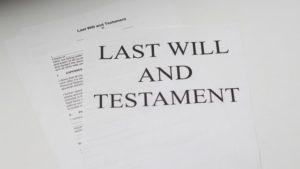 As they say, the only two certainties in life are death and taxes. At some point we will all mourn the loss of a loved one. Once the mourning is completed, questions may arise whether the decedent had a last will and testament under which you might be a beneficiary. If so, the question may then become when might you receive your inheritance. This question is frequently raised, however, the answer is not as simple as some might believe.
As they say, the only two certainties in life are death and taxes. At some point we will all mourn the loss of a loved one. Once the mourning is completed, questions may arise whether the decedent had a last will and testament under which you might be a beneficiary. If so, the question may then become when might you receive your inheritance. This question is frequently raised, however, the answer is not as simple as some might believe.
If a last will and testament is located, the first step would be for the named executor to seek to admit to probate the decedent’s last will and testament. Provided this process goes smoothly, there are many things which must be accomplished prior to distributions being made to beneficiaries of the estate. What is required prior to distributions being made depends upon the complexity of the estate, which entails the type of assets the decedent had, as well as their status.
In general, after being appointed as executor of the estate, this individual must first identify all assets of the decedent and seek to gather or marshal them. This process can be quite simple, or can be complex, depending upon the nature of the assets of the decedent. Once the assets of the decedent are properly identified and marshalled, the executor can move to the next step.
The executor should retain a professional to determine what the potential estate taxes would be once the assets of the estate are marshalled and identified. At this point, it is often suggested that the executor make a preliminary tax payment to the state and federal governments concerning the probable estate taxes. This will give the executor more time to complete the necessary estate tax returns without the possibility of impairing a penalty.
Now, assets of the estate are still not ready for distribution. The next thing the executor must do is make sure that current debts and obligations of the decedent are paid from available assets within the estate. This may consist of a one-time payment to satisfy a debt, or monthly or yearly payments concerning other obligations of the decedent. The executor should have a good working spreadsheet of the assets of the estate, as well as information concerning the obligations of the estate. Once these expenses are identified and under control, the executor may look to the next step.
At this point, the executor may seek to make an interim distribution to the beneficiaries of the estate. What this means is that the beneficiaries would receive a part of their bequests under the Will, however, not the entire amount. The executor would maintain an appropriate hold back to satisfy any potential future state and federal taxes of the estate. Typically, these partial distributions are for 50% or less of the entire balance which a party might receive as their bequest.
After the partial distributions are made, the executor will continue to wind down the estate to ensure that all debts, obligations, and appropriate state and federal taxes are paid. Once this is completed and appropriate tax waivers are received, the executor will prepare an accounting to be reviewed by all beneficiaries of the estate. Once the accounting is reviewed and approved, the final distributions can be made. When a beneficiary receives a final distribution they must sign a form which requires them to return any part of their bequest should tax liabilities of the estate arise in the future. This is a typical form and is signed by any beneficiary when they receive a bequest under an estate. As such, a beneficiary should not be alarmed by having to sign such a form.
The above blog provides a brief outline as to what occurs prior to distributions being made under an estate. The process differs for each estate depending upon the value and complexity. Should a beneficiary of an estate have any questions, they should consult with competent counsel.








